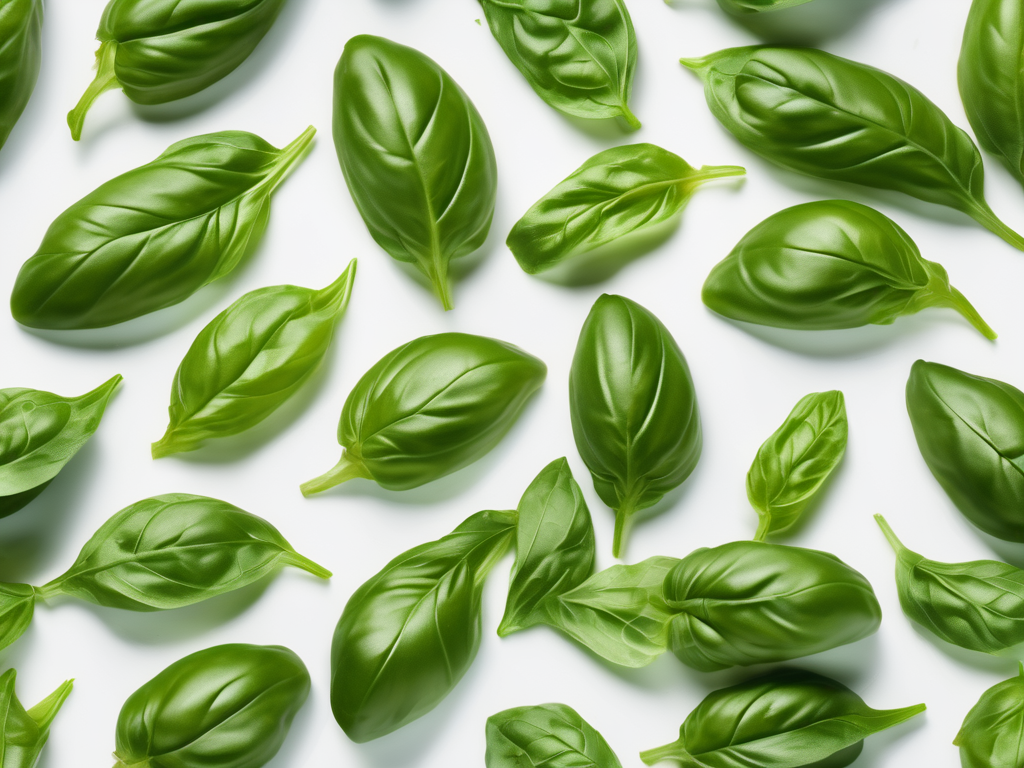
Identifying and Dealing with Moldy Basil Fresh
Get Your Free Food Safety Cheat Sheet
30 most common foods with instant answers. Print it and stick it on your fridge—completely free!
Identifying and Dealing with Moldy Basil Fresh
Basil Fresh is a versatile herb that adds flavor and aroma to a wide range of dishes, from pasta sauces to salads. However, like any fresh produce, basil is susceptible to mold growth if not stored and handled properly. Moldy basil not only affects the taste and quality of your dishes but can also pose health risks if consumed. In this blog post, we will discuss how to identify moldy basil fresh and provide tips on how to deal with it effectively. (Basil fresh)
Signs of Moldy Basil Fresh
When it comes to identifying moldy basil fresh, it's essential to pay attention to the following signs:
Visual Inspection
- Discoloration: Moldy basil may appear discolored, with black, brown, or white spots on the leaves.
- Fuzzy Texture: Mold growth often presents as a fuzzy or powdery texture on the surface of the leaves.
- Slimy Appearance: Moldy basil may feel slimy to the touch, indicating decay.
Smell
- Musty Odor: Mold-infested basil may emit a musty or unpleasant odor, distinct from its usual fresh aroma.
Texture
- Soft or Mushy Leaves: Moldy basil leaves may feel soft, mushy, or wilted, indicating decay and moisture accumulation.
Dealing with Moldy Basil Fresh
If you discover that your basil fresh is moldy, it's crucial to take immediate action to prevent the mold from spreading and affecting other produce. Here are some tips on how to deal with moldy basil fresh effectively:
1. Discard Moldy Leaves
- Separate the Affected Leaves: Remove any moldy leaves from the bunch of basil fresh.
- Inspect the Rest: Check the remaining leaves for signs of mold growth. Discard any additional affected leaves to prevent further contamination.
2. Wash the Basil
- Rinse Under Cold Water: Thoroughly rinse the remaining basil leaves under cold running water to remove any mold spores and debris.
- Pat Dry: Gently pat the basil leaves dry with a clean paper towel to remove excess moisture.
3. Store Properly
- Use Airtight Containers: Store the basil fresh in an airtight container or a resealable plastic bag to prevent moisture buildup and mold growth.
- Refrigerate: Place the container in the refrigerator to prolong the shelf life of the basil fresh.
4. Monitor for Spoilage
- Regularly Check the Basil: Keep an eye on the basil fresh and inspect it periodically for any signs of mold or spoilage.
- Use Promptly: Consume the basil fresh within a few days to ensure optimal flavor and quality.
5. Preventive Measures
- Proper Storage: Store basil fresh away from moisture and direct sunlight to prevent mold growth.
- Inspect Before Use: Before using basil in your dishes, inspect the leaves for any signs of mold or decay.
- Buy Fresh: Purchase basil from reputable sources and choose fresh, vibrant leaves to minimize the risk of mold contamination.
Conclusion
In conclusion, identifying and dealing with moldy basil fresh is essential to ensure food safety and quality. By being vigilant and following the tips mentioned above, you can enjoy fresh and flavorful basil in your culinary creations while minimizing the risk of mold contamination. Remember to inspect your basil fresh regularly, store it properly, and discard any moldy leaves promptly to maintain its freshness and taste. With these practices in place, you can savor the delicious flavors of basil without any worries about mold contamination. [Basil Fresh](/food/basil fresh) (Basil fresh)
Related Posts
Here are some other articles you might find helpful:
Authoritative Food Safety References
These agencies and university labs inform every tip and health precaution we publish.
USDA FoodKeeper – Cold Storage Guidelines
Official refrigerator, freezer, and pantry timelines maintained by the U.S. Department of Agriculture.
Visit USDA FoodKeeperFDA Produce Safety Rule & Grower Guidance
Field-to-fridge handling practices that prevent contamination of fruits, vegetables, and leafy greens.
Visit FDA Produce SafetyCDC Foodborne Illness Prevention Hub
Surveillance-backed guidance on pathogens, symptoms, and steps to reduce foodborne illness risk.
Visit CDC Food SafetyUC Davis Postharvest Technology Center
University research detailing optimal storage atmospheres for produce after harvest.
Visit UC Davis PostharvestPenn State Extension – Home Food Preservation & Safety
Peer-reviewed extension bulletins on safe canning, chilling, and reheating practices.
Visit Penn State ExtensionGet Your Free Food Safety Cheat Sheet
30 most common foods with instant answers. Print it and stick it on your fridge—completely free! Want more? Upgrade to the complete guide with 70+ foods.
Scan your food directly and get instant safety info using our AI-powered camera feature.